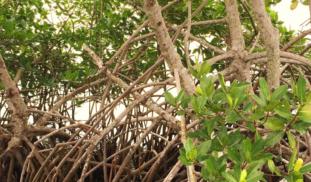Please wait...
About This Project
Impacts to Mangrove fringe forests leave coastal areas vulnerable to erosion and sea-level rise. Over 600 km of mangrove forests have already disappeared from Florida's coastal areas. Mangroves are protected in Florida, but no studies to date have evaluated the consequences of impacts that still occur under this protection. This study will assess how urbanization, forest canopy alteration, and coastal change affect Mangroves in Florida.
More Lab Notes From This Project

Browse Other Projects on Experiment
Related Projects
Using eDNA to examine protected California species in streams at Hastings Reserve
Hastings Reserve is home to three streams that provide critical habitat for sensitive native species. Through...
City smart: Are cities making birds smarter?
One cannot go to Florida and miss the White Ibises roaming golf, park and private lawns. But how does a...
How do polar bears stay healthy on the world's worst diet?
Polar bears survive almost entirely on seal fat. Yet unlike humans who eat high-fat diets, polar bears never...





